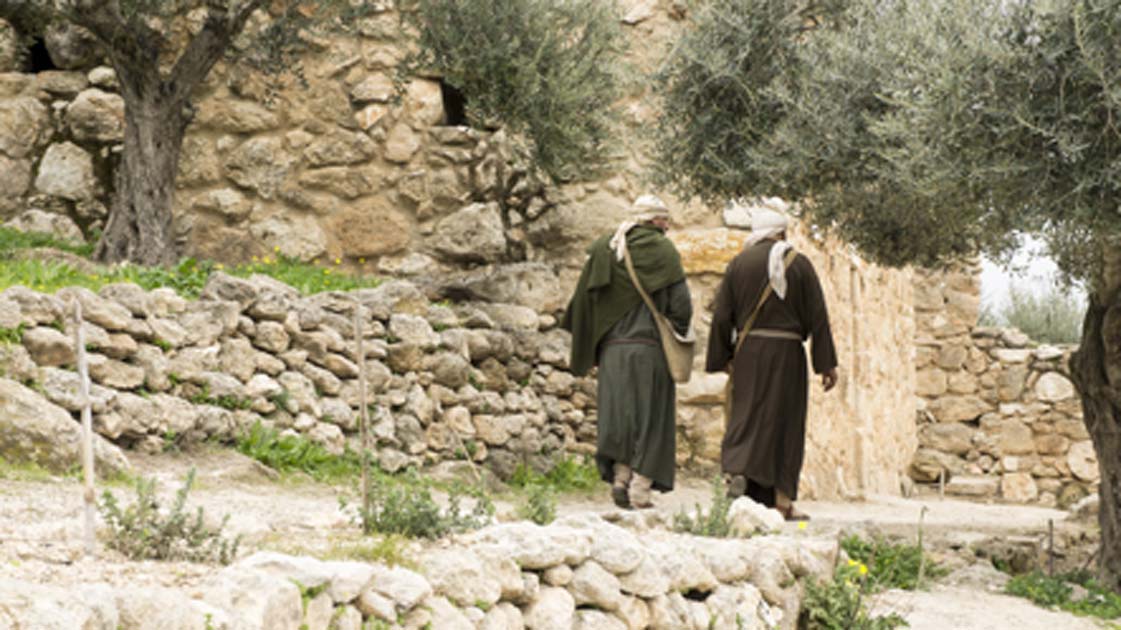Experts Think They Have Uncovered the Biblical Town of Emmaus
Archaeologists have made what is an important discovery for Christendom in Israel. They claim that they have found a Hellenistic era fortress and this could be the location of one of the most important events in the New Testament. They believe that they have found the town of Emmaus near where the Gospel of Luke says that Jesus first appeared to two of his disciples after his resurrection.
Aleteia reports that “a Franco-Israeli expedition has been digging at Kiriath Yearim, a hill overlooking the approach to Jerusalem a few kilometers west of the city”. This site is located near the town of Abu Ghosh, a town famous because the Ark of the Covenant was kept there before it was transferred to Jerusalem.
The team has found a range of discoveries dating back to the 8th century BC, which is not a total surprise given the area’s strategic importance on the western route to Jerusalem.
Seleucid Fortress
The team, which included French archaeologists from the College de France and Israeli investigators from Tel Aviv University believe that they have unearthed the “massive walls of a 2,200-year-old Hellenistic fortification” according to Haaretz. These were built on some pre-existing fortifications and are up to 9 feet (3 meters) thick.
The team was able to date the walls by analyzing some pottery found near the fortifications. They used “Optically Stimulated Luminescence, which can tell researchers when certain materials were last exposed to sunlight” to date the pottery and the fortifications, according to Haaretz.
These walls may have been built by a Seleucid general - Bacchides. His army defeated Judah Maccabee who had earlier captured Jerusalem, a feat which is celebrated annually by Jews during the Festival of Hanukkah.
Bacchides built a ring of fortresses in what is modern Israel. The Kiriath Yearim site was later occupied by the Romans and was very important during the First Jewish Revolt.

Inscription from Abu Ghosh mentioning a ‘vexillatio’, a detachment, of the Xth Roman legion. (Avi1111 / Public Domain)
The fortifications built by the Seleucids have been documented in several sources, however, the fortifications found at Kiriath Yearim do not appear on any list of Hellenistic fortresses. The researchers examined the Bible in order to find information on the site and according to Haaretz they “reached a stunning conclusion that has broader implications for biblical archaeology and Christian history”.
A Lost Biblical Town Unearthed?
The archaeologists believe that, based on the site’s location, it is the biblical Emmaus. The distance of the site from Jerusalem would also give credence to the idea that it was the town. Emmaus played a very important role in the story of Jesus and one of the key events in the history of Christianity.
In the New Testament, while walking on the road to Emmaus, two of his disciples encountered the risen Christ. The account by St. Luke describes how Jesus first appeared here to Cleopas and another unnamed disciple after his resurrection.
- The First Crusade: Christian and Muslim Bloodshed as Peasants, Princes, and Turks Clash in the Holy Land
- Walking the Waves: Celestial Puns Resolve the Conflicting Accounts of Jesus’ Sea-Walk Miracle
- Stolen 1200-Year-Old Bible with Gold-Encrusted Motifs Recovered in Anti-Smuggling Raid in Turkey

Jesus meets two disciples on the road to Emmaus. (Neil Alexander McKee / CC BY-SA 2.0)
This potentially means that the archaeologists have made an astonishing discovery. However, there are those who caution linking Kiriath Yearim to the biblical town of Emmaus. Benjamin Isaac, a former archaeology professor stated that “there is not enough hard evidence to conclusively link Emmaus to Kiriath Yearim” reports Haaretz.
Where is the Biblical Emmaus?
There are several other locations that have traditionally been viewed as the site of the town where Jesus first appeared after his resurrection from the dead. Aleteia reports that “what later became the Byzantine town called Emmaus Nicopolis” is often seen as the site of the biblical Emmaus. This town fits the description of the Emmaus mentioned in the Bible and its name was preserved in the Arab village of Imwas, that was built on the site of the Byzantine town.

Emmaus Nicopolis is viewed by some experts as the biblical town of Emmaus. (Avi1111 / CC BY-SA 4.0)
However, others would argue that Kiriath Yearim has a strong claim to be the biblical Emmaus. Two archaeologists, Israel Finkelstein and Thomas Römer from the University of Tel Aviv, believe that Kiriath Yearim and Abu Khosh was most likely the place where according to the Bible, Jesus miraculously appeared to his two disciples. Römer stated that is “why the Crusaders, back in the 12th century, built the magnificently frescoed Church of the Resurrection in Abu Ghosh”, according to Aleteia.
The find at Kiriath Yearim is an exciting one and archaeologists have certainly unearthed a Hellenistic fortress. However, there is as yet no conclusive evidence that they have found Emmaus. If it is established as the place where Jesus miraculously appeared, it could support the view that the Bible is a reliable historical document. Moreover, if it is proved that Kiriath Yearim is Emmaus it could become a site of Christian pilgrimage.
Top image: Two disciples saw Jesus after his resurrection on the road to Emmaus. Source: icksanglee / Adobe Stock.
By Ed Whelan



















